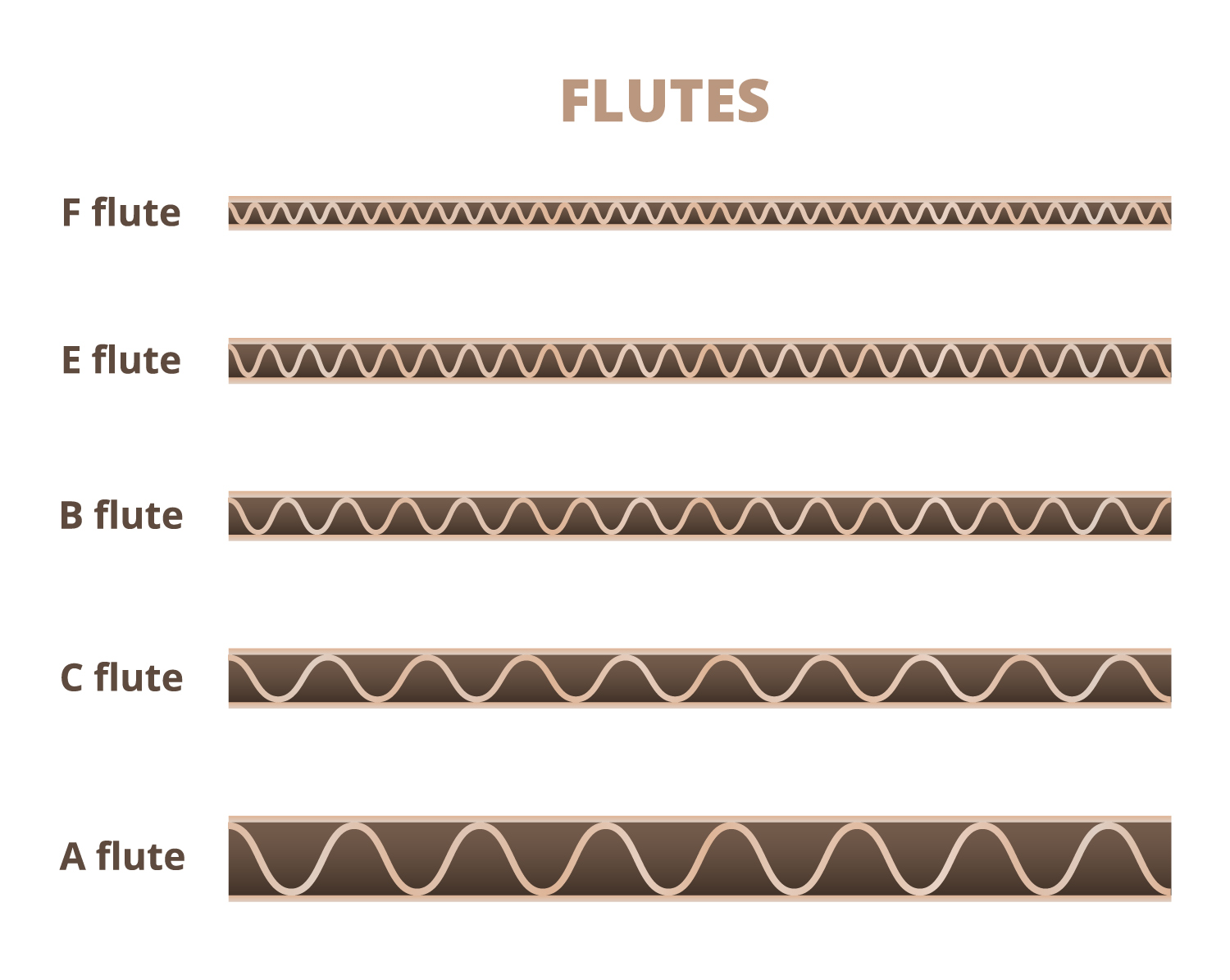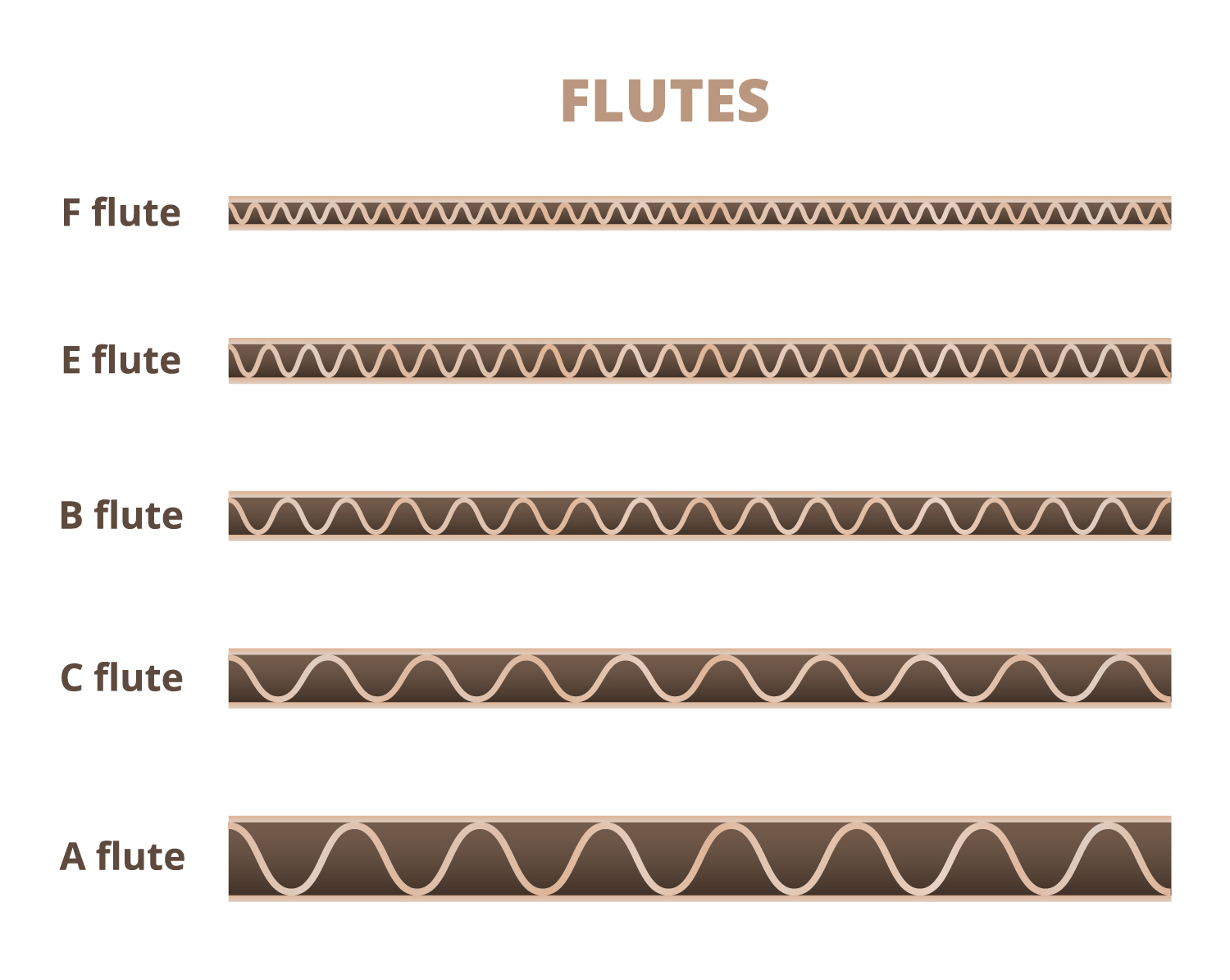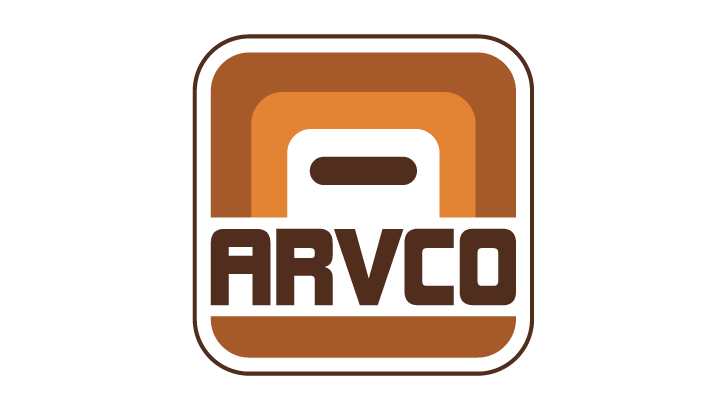
Corrugated flutes are an essential component of packaging materials. There are five main types of flutes: A, B, C, E, and F. These flutes vary in thickness, ranging from 0.8 millimeters to 5 millimeters. While the names of the flutes may suggest a size order, they are named based on the order in which they were invented, with A being the first and F being the latest.
A Flute – The Strongest Option
A flute is the thickest of all corrugated flutes, with a thickness of about 5 millimeters–or ¼ inch–making it a great option for fragile items that require extra protection. Its sturdiness also makes it suitable for packaging heavier items.
B Flute – Good for Printing and Inner Packaging
B flute has a middle range a thickness of approximately 3.2 millimeters–⅛ inch. Not only is B flute ideal for inner packaging components due to its resistance to crushing and punctures, but it also offers a good surface for printing logos, graphics, and text.
C Flute – A Good Shipping Option
C flute is the second-thickest option, with a thickness of about 3.2 millimeters–11/64 inches. C flute is typically used for shipping boxes because it is compressible and resists crushing. Like the B flute, it is also an excellent option for printing branded and marketing materials.
E Flute – The Thinnest and Most Space-Efficient
E flute is the second-thinnest option, measuring approximately 1.6 millimeters–1/16 inch in thickness. The E flute is a good choice for reducing storage space and costs, commonly used for packaging consumer goods.
Each type of corrugated flute serves a unique purpose, and choosing the right one depends on various factors, such as the weight and fragility of the item being packaged, as well as storage and printing requirements.





